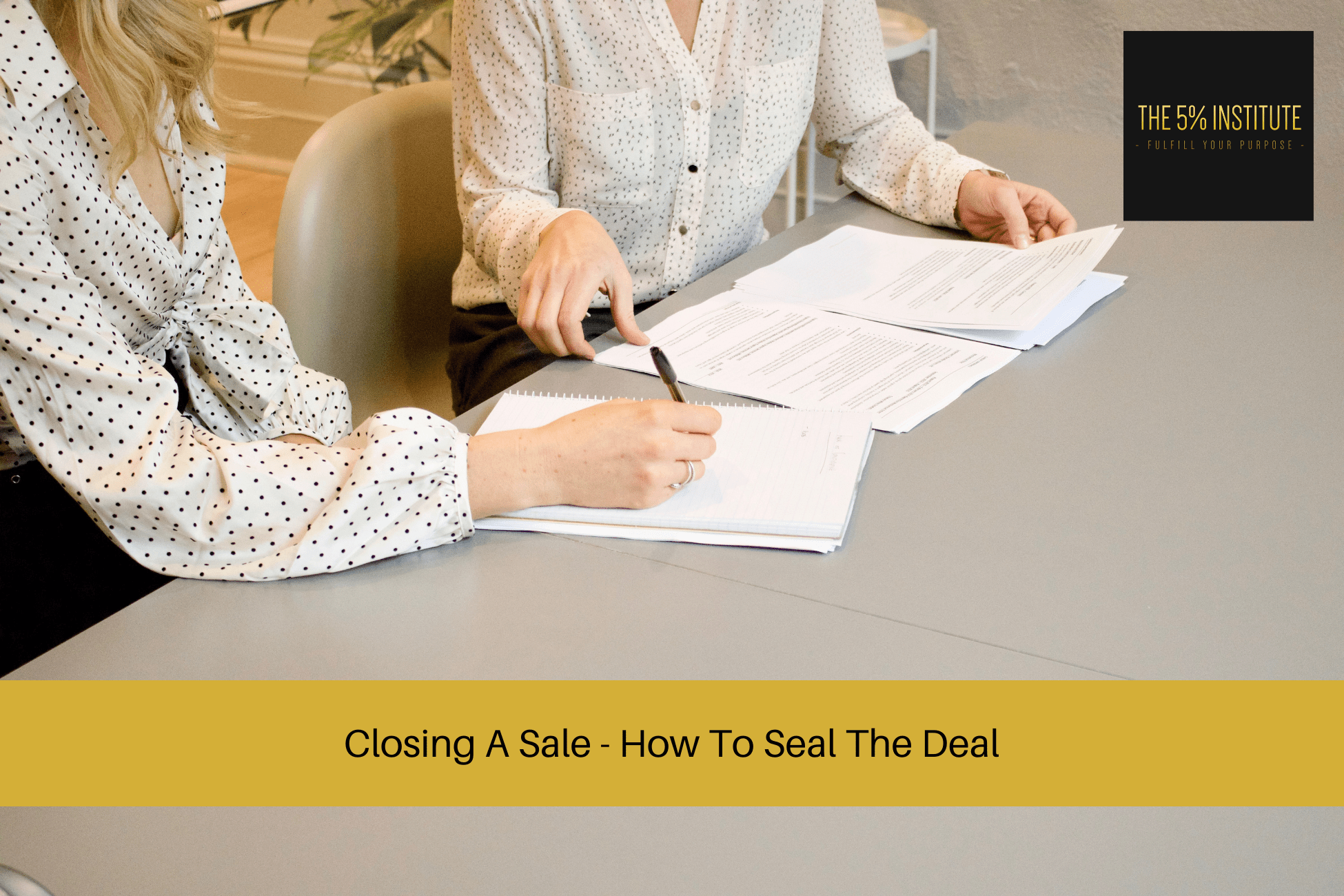
Closing A Sale – How To Seal The Deal
Closing a sale is a critical skill in the world of business.
It’s the final step in the sales process where a customer makes the decision to purchase a product or service.
Effective closing techniques can significantly impact a company’s success and revenue.
In this article, we will explore the art of closing a sale and provide you with practical strategies to become a master closer.
So, let’s dive in!
1. Introduction: The Importance of Closing a Sale
Closing a sale is the culmination of all the efforts put into understanding the customer, building rapport, and presenting a compelling solution.
It’s the moment that determines whether a potential customer becomes a satisfied buyer.
A successful closing not only generates revenue but also establishes long-term customer relationships and fosters brand loyalty.
2. Understanding the Customer’s Needs
To close a sale effectively, you must first understand your customer’s needs.
Actively listen to their challenges, goals, and desires.
By gaining deep insights into what drives them, you can tailor your sales pitch to address their specific pain points.
This understanding builds trust and positions you as a solution provider.
3. Building Rapport and Establishing Trust
Building rapport is essential for any successful sales interaction.
Establishing a genuine connection with the customer creates a sense of trust and likability.
Use active listening, maintain eye contact, and engage in meaningful conversations.
People are more likely to buy from someone they trust and feel comfortable with.
4. Presenting a Compelling Solution
When it comes to closing a sale, your product or service must provide a solution that meets the customer’s needs.
Clearly communicate the unique value proposition and demonstrate how your offering can solve their problems or fulfil their desires.
Use persuasive language, visual aids, and testimonials to reinforce the benefits.
5. Overcoming Objections with Confidence
Objections are a natural part of the sales process and should be anticipated.
Address objections with confidence, focusing on the value and benefits your product or service provides.
By having well-prepared responses and addressing concerns promptly, you can alleviate any doubts the customer may have.
6. Asking for the Sale
Asking for the sale is a crucial step that many salespeople overlook.
Clearly and confidently ask the customer to make a purchase.
Use closing techniques such as the assumptive close, where you assume the sale will happen, or the alternative close, where you present two choices that both lead to a sale.
Be direct and confident in your approach.
7. Sealing the Deal with Follow-up
Closing a sale doesn’t end with the customer saying “yes.”
Follow-up is essential to solidify the sale and maintain the customer relationship.
Express gratitude for their decision, provide additional support or resources, and stay in touch to ensure customer satisfaction.
A satisfied customer is more likely to become a loyal advocate for your brand.
8. Conclusion
Closing a sale is both an art and a science.
By understanding the customer, building rapport, presenting a compelling solution, overcoming objections, and asking for the sale, you can increase your closing success rate.
Remember to follow up after the sale to nurture the customer relationship and turn satisfied buyers into loyal customers.
FAQs
Q: What are some effective closing techniques?
A: Some effective closing techniques include the assumptive close, the alternative close, and the summary close.
These techniques help guide the customer towards making a purchasing decision.
Q: How can I overcome objections during the closing process?
A: To overcome objections, listen attentively, empathize with the customer’s concerns, and respond with persuasive arguments that address their specific objections.
Providing evidence, testimonials, or case studies can also help alleviate doubts.
Q: Is it essential to follow up after closing a sale?
A: Yes, following up is crucial to solidify the sale and maintain the customer relationship.
It shows your commitment to customer satisfaction and provides opportunities for additional support or future sales.
Q: What role does building rapport play in closing a sale?
A: Building rapport establishes trust and likability, making the customer more receptive to your sales pitch.
It creates a positive emotional connection that increases the likelihood of closing the sale.
Q: How can I improve my closing skills?
A: Improving your closing skills takes practice and ongoing learning.
Study successful sales techniques, seek feedback from experienced sales professionals, and continuously refine your approach based on customer feedback.
Want To Close Sales Easier?
Are you committed to closing sales a lot easier, and consistently?
If so, you should check out our self-paced and affordable online sales training program; The 5% Sales Blueprint.
It’ll give you everything you need to close sales consistently.
To learn more, simply click on the link below for more information.
Our Online Sales Training Program – The 5% Sales Blueprint.



